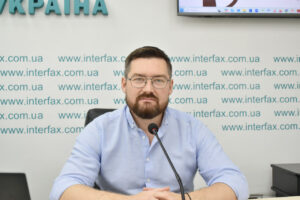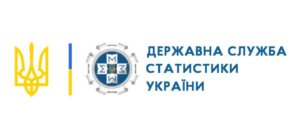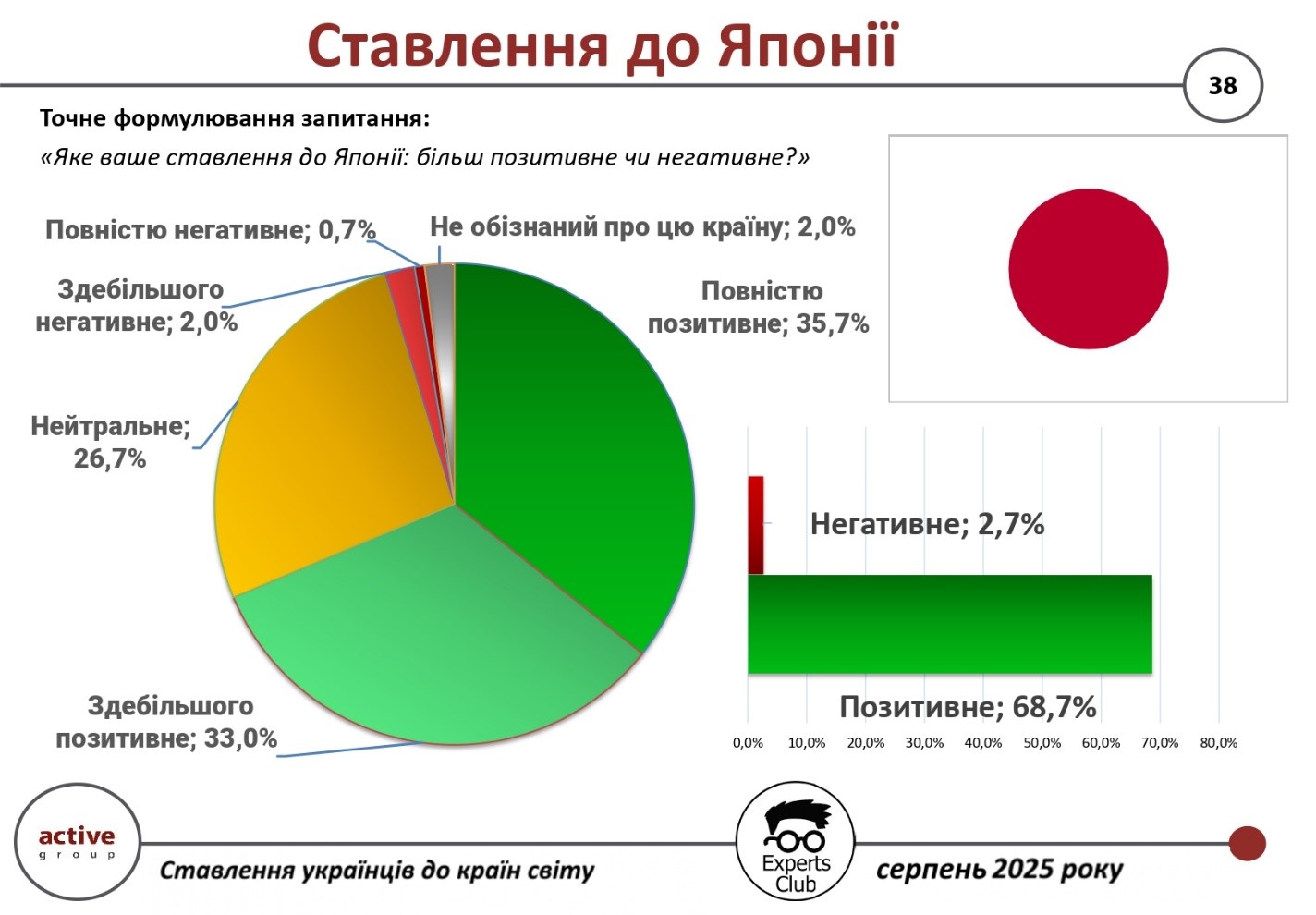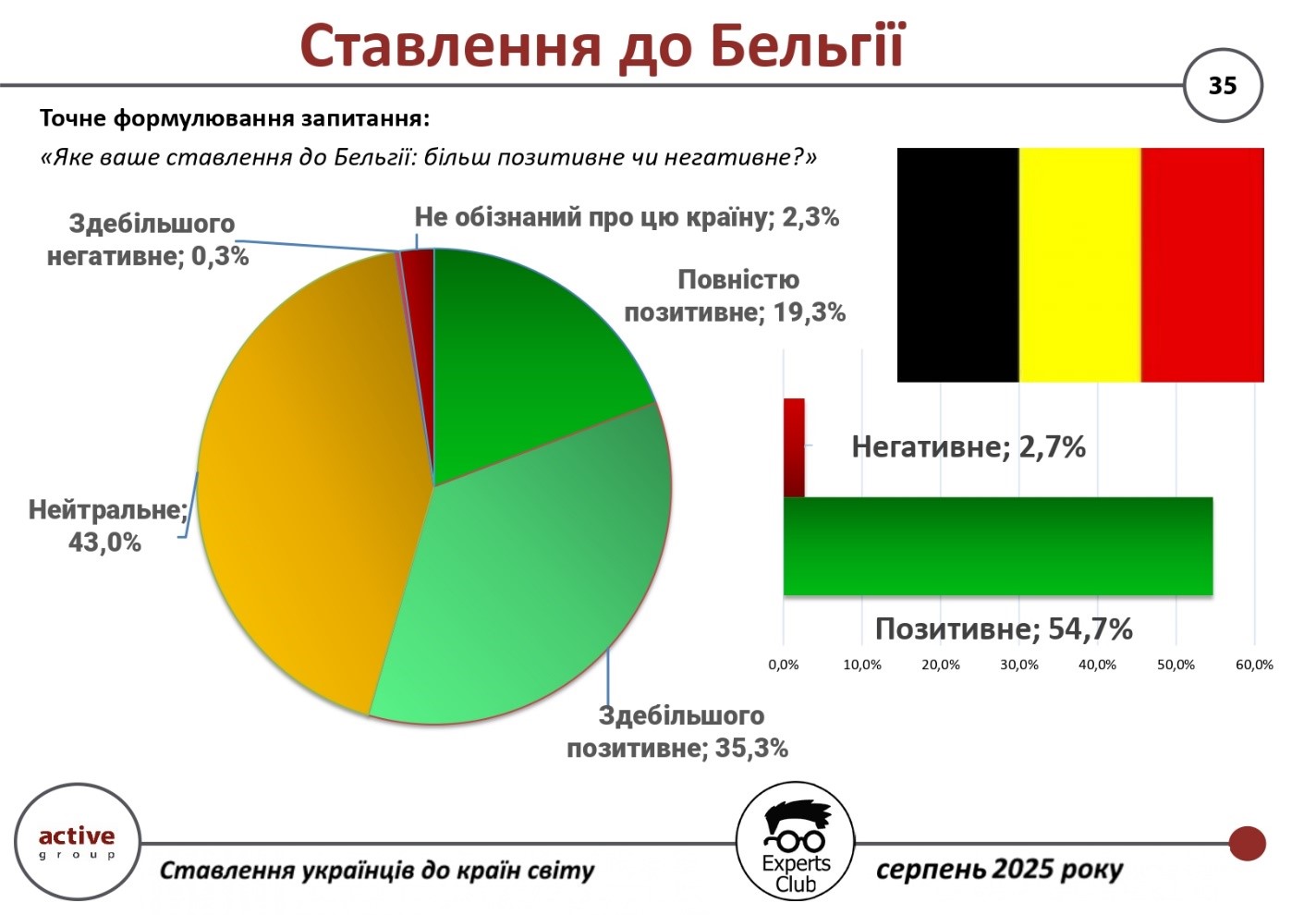
This article presents key macroeconomic indicators for Ukraine and the global economy as of the end of June 2025. The analysis is based on current data from the State Statistics Service of Ukraine (SSSU), the National Bank of Ukraine (NBU), the International Monetary Fund (IMF), the World Bank, and leading national statistical agencies (Eurostat, BEA, NBS, ONS, TurkStat, IBGE). Maksim Urakin, Director of Marketing and Development at Interfax-Ukraine, Candidate of Economic Sciences and founder of the Experts Club information and analytical center, presented an overview of current macroeconomic trends.
Macroeconomic indicators of Ukraine
Ukraine ended the first half of 2025 in a state of moderate but fragile stabilization. After a “flat” start to the year and a weak first quarter, which the NBU assessed as a period of subdued activity, in April-June the economy maintained positive momentum primarily due to domestic consumption and sectors that adapted to military logistics. In its April decision, the NBU kept the policy rate at 15.5%, emphasizing the need to support currency stability and reduce inflation expectations; in its July decision, the regulator confirmed this level, which anchored rates for hryvnia instruments.
Inflation slowed significantly: in June, the annual rate fell to 14.3% y/y (from 15.9% in May), reflecting a combination of tighter monetary policy, currency stability, and price adjustments for certain food groups; the monthly rate was +0.8%. This is the first significant “dip” in annual inflation below 15% this year.
Foreign trade remains the main source of imbalances. In January–May, exports of goods amounted to about $16.95 billion, imports to $31.54 billion, and the negative balance deepened to $14.6 billion (+49% y/y). The key drivers of imports were energy, machinery, and chemicals; exports were structurally biased toward food and raw materials.
Against the backdrop of the trade gap, international reserves remained an important buffer. As of July 1, 2025, they reached $45.1 billion (+1.2% in June) thanks to large inflows from partners (in particular, the EU, Canada, and the World Bank), which exceeded FX interventions and debt payments. This is a historically high level for Ukraine and a critical safety margin for the currency market.
“Current growth is supported by consumption and official financing; without the launch of an investment cycle, it will remain low and unsustainable. International reserves are a stabilization tool, not a source of development; the effect will only appear after they are converted into value-added projects. The trade deficit, in turn, is structural in nature: it should be addressed through logistics, energy modernization, and localization of production, not just exchange rate decisions,” said Maksim Urakin.
The debt burden has increased. As of June 30, 2025, the total public and publicly guaranteed debt was estimated at approximately $184.8 billion (equivalent to UAH 7.697 trillion), adding nearly $3.9 billion in a month. External liabilities structurally prevail, which increases dependence on official financing.
International support remained systemic. On June 30, the IMF completed the eighth review of the EFF program and approved further financing (total payments under the program exceeded $10 billion), while confirming Ukraine’s fulfillment of key criteria and continuation of structural reforms.
“The second quarter showed that the economy has learned to operate in a mode of constant shocks — we see the resilience of small and medium-sized businesses, the flexibility of logistics, and the rapid reorientation of exporters. But the fundamentals remain unchanged: the investment cycle has not been launched, and the trade deficit is structural; it will not disappear without a targeted industrial policy and incentives for localizing production. The discount rate of 15.5% is a compromise between the price of money and currency stability; it works as long as official financing enters the country. If we want to get out of “survival mode,” we need long-term money to restore energy, logistics hubs, and high-tech production. Reserves of over $45 billion are not a reason to relax, but a window of opportunity that must be converted into value-added projects, otherwise exchange rate stability will remain expensive and temporary,” Maksim Urakin emphasized:
Global economy
The world moved unevenly in the first half of 2025. After a technical contraction in the first quarter (-0.5% SAAR, -0.1% q/q), the US entered the second quarter with a recovery in demand: by the end of June, there were already signs of easing price pressure on the PCE index (≈2.5% y/y in May) and stabilization of household spending. Later official estimates show a significant rebound in the second quarter, but as of June 30, the key picture was “cold” demand amid high interest rates.
The eurozone showed a contrast: after a strong Q1 (+0.6% q/q), momentum moderated in April–June; preliminary estimates show Q2 added +0.1% q/q. The factors were weak external conditions, a correction in industry, and cautious consumers, despite easing inflation. The UK remained a positive exception among the G7: +0.7% q/q in Q1 and +0.3% q/q in Q2, although inflation accelerated to 3.6% y/y in June, slowing down the pace of monetary policy easing.
China maintained a pace close to its official target: GDP +5.2% y/y in Q2 (after +5.4% in Q1), but inflation remained sluggish — June CPI +0.1% y/y, reflecting weak domestic consumption and pressure from real estate. Exports and industrial production drove growth, but the question of the sustainability of domestic demand remained open.
Turkey grew by 2.0% y/y in Q1; inflation in June fell to ≈35% y/y, demonstrating the effect of protracted disinflation despite high rates and a cool business cycle.
India remained the most dynamic major economy: in Q4 of fiscal year 2024/25, real GDP grew by 7.4% y/y, and by 6.5% for the year as a whole; inflation in June came close to ≈2% y/y (according to MoSPI publications), creating room for cautious policy easing going forward.
Brazil added +1.4% q/q (2.9% y/y) in Q1 on the back of strong agriculture; the IPCA in June was 5.35% y/y (+0.24% m/m), remaining above the central bank’s target and forcing monetary authorities to act cautiously.
“Global growth in the first half of 2025 is a mosaic of different speeds. The US is balancing between tight rates and the desire not to ”overbrake” demand, Europe is slowly emerging from stagnation, China is holding the bar thanks to exports, but domestic demand has not yet recovered. For Ukraine, this means one simple thing: we should not expect external demand to pull us out of the doldrums on its own. We need targeted industrial programs, support for high value-added exports, and a transparent import substitution policy where it makes economic sense. Then, even amid global turbulence, we will be able to turn record reserves and international support into a long investment cycle and a new economic structure,” Maxim Urakhin concluded.
At the end of June 2025, Ukraine’s economy remains in a state of controlled equilibrium: inflation is slowing, reserves are at historic levels, and monetary policy is predictable. At the same time, a deep trade deficit, high debt burden, and weak investment flows remain key risks that require immediate responses — from tax and customs policy to incentives for localizing production and restoring critical infrastructure.
Head of the Economic Monitoring project, Candidate of Economic Sciences Maksim Urakin
Source: https://interfax.com.ua/news/projects/1113998.html

This article presents key macroeconomic indicators for Ukraine and the global economy as of the end of May 2025. The analysis is based on current data from the State Statistics Service of Ukraine (SSSU), the National Bank of Ukraine (NBU), the International Monetary Fund (IMF), the World Bank, and leading national statistical agencies (Eurostat, BEA, NBS, ONS, TurkStat, IBGE). Maksym Urakin, Director of Marketing and Development at Interfax-Ukraine, Candidate of Economic Sciences and founder of the Experts Club information and analytical center, presented an overview of current macroeconomic trends.
Ukraine’s macroeconomic indicators
The first five months of 2025 saw a modest recovery amid high uncertainty. According to preliminary estimates by the State Statistics Service, Ukraine’s real GDP grew by 1.1% y/y in the first quarter of 2025 (seasonally adjusted: –0.3% q/q), reflecting the fragile but still positive dynamics of domestic demand and the adaptation of businesses to wartime conditions.
Inflationary pressure intensified in May: annual inflation accelerated to 15.9% (month-on-month: +1.3%), mainly due to a jump in food prices and the impact of energy factors. The NBU directly pointed to seasonal and supply factors and at the same time expects a slowdown in the summer months.
Against this backdrop, the NBU Board consistently maintained the policy rate at 15.5% per annum in March, April, and June, emphasizing the priority of anchoring inflation expectations and exchange rate stability.
Foreign trade in goods remained in deep deficit in January–April: exports amounted to $15.8 billion, imports to $29.3 billion, and the negative balance to about $13.4 billion. During the same period, exports of services amounted to $12.7 billion, imports to $7.4 billion. Structurally, imports are dominated by fuel, machinery, and transport, while commodity exports are concentrated in raw material groups.
Despite the trade gap, international reserves reached historically high levels at the end of May, amounting to $44.5 billion as of June 1, 2025 (thanks to official receipts and NBU operations).
At the same time, the debt burden is high: total public and guaranteed debt as of May 31, 2025, was $180.97 billion (7.52 trillion UAH).
“The current macro dynamics are more like driving with the handbrake slightly engaged: the economy is capable of moving, but without acceleration. The positive aspect is that we are maintaining growth and gradually curbing inflation. The negative aspect is the sources of this balance: reserves and external inflows are replacing investments and export revenues. If we do not convert record reserves and access to international programs into an investment impulse in manufacturing, energy, and logistics in the summer, we will have to extinguish structural fires in the fall, rather than price fires,” notes Maxim Urakin.
The expert also emphasizes the quality of demand. According to Urakin, consumption is reviving, but it is fragile and uneven — it is being sustained by the IT sector, services, and part of trade. Industry without major infrastructure repairs, cheap long-term money, and access to ports is like an engine running at minimum speed.
“Add the risks of energy during peak periods, and we get an economy that needs not isolated injections but systemic therapy: insurance of military risks for investors, fast ‘windows’ for importing equipment, duty-free corridors for exporters, and large-scale public-private partnership projects. Otherwise, we will preserve the trade deficit and dependence on external financing,” the economist stressed.
Global economy
The global picture at the end of May 2025 remains mixed. In its April WEO, the IMF forecasts global economic growth of around 2.8% in 2025, with a further decline in inflation, but with risks related to geopolitics and trade protectionism remaining.
After overheating in 2024, the US saw negative GDP growth in the first quarter of 2025: according to the BEA’s second estimate, a 0.3% decline in annual terms, explained by a sharp increase in imports and a reduction in government spending; domestic final demand remained stable. In May, core PCE inflation remained close to 2.6% y/y, and the Fed kept the rate range at 4.5–4.75% at its meeting on May 1 (in June, it continued its cycle of moderate easing).
China reported official GDP growth of 5.4% y/y (1.2% q/q) in Q1, supported by industry, transport, and IT services; at the same time, the real estate sector remains a restraining factor.
The European economy is gradually emerging from stagnation. In its spring forecast, the European Commission expects GDP growth of 1.1% in the EU and 0.9% in the eurozone in 2025; inflation is converging with the ECB’s target. The first quarter provided positive momentum: eurozone GDP grew by 0.4% q/q.
The UK was a pleasant surprise for the G7: +0.7% q/q in Q1, and on May 8, the Bank of England lowered its rate to 4.5%, maintaining cautious rhetoric due to inflation risks.
Turkey continues to experience a combination of growth and high inflation: in Q1 2025, GDP grew by 5.7% y/y, while inflation in May stood at 35.4% y/y despite tight monetary policy.
India maintains high momentum: according to official data, in the fourth quarter of the 2024/25 fiscal year (January–March 2025), real GDP grew by 7.4% y/y; for the entire fiscal year, the government estimates growth of approximately 6.5–6.9%.
Brazil added 1.4% q/q (2.9% y/y) in the first quarter, but inflation remained high in May — around 5.3% y/y, forcing the central bank to maintain tight financial conditions.
“The world in May 2025 is a multi-speed economy. The US is cooling down with negative Q1 statistics, but demand and the labor market are still driving growth. Europe, despite low growth rates, is on a trajectory consistent with its inflation target; the UK is showing resilience; China is holding steady at 5%+, but with weak private demand; India is the clear leader in terms of growth among the major economies; Turkey is experiencing high inflationary turbulence; Brazil is growing, but paying dearly for it,” comments Maxim Urakhin.
According to the expert, for Ukraine this means a new configuration of opportunities: cheaper global money will not appear quickly, but the “window” for investment in the relocation of production, energy, and defense-industrial chains is already open.
“The main thing is to design growth not as a simple restoration of the pre-war structure, but as a leap in productivity: processing instead of raw materials, logistics with high added value, digital services, and engineering that are export-scalable. Then macrofinancial stability will cease to be fragile and will become a platform for development,” added the founder of Experts Club.
Conclusion
In January–May 2025, the Ukrainian economy is in a mode of sustained stabilization: moderate annual growth at the start of the year, inflation peaking in May, record reserves, and high debt burden. The strategic choice is to transform external support and import resources into a source of investment in productivity and exports. The global context is asymmetrical and risky, but it opens up niches where Ukraine can grow faster than the world if it focuses on structural projects and policies that convert stability into development.
A more detailed analysis of Ukraine’s economic indicators is available in the monthly information and analytical products of the Interfax-Ukraine agency, Economic Monitoring.
Head of the Economic Monitoring project, Candidate of Economic Sciences Maksim Urakin

Industrial production in Ukraine increased by 3.2% in July 2025 compared to July last year. This is the second consecutive month of growth: in June, the indicator rose by 2.9%, while in May and April, a decline was recorded, according to the State Statistics Service.
In January-July 2025, the total volume of industrial production was 3% lower than in the same period of 2024. The decline in the extractive industry was 11.1%, and in the production of coke and petroleum products, 6.3%.
The volume of industrial products sold over seven months reached UAH 2,296.5 billion, of which UAH 406.4 billion was accounted for by exports.
The main industries that showed growth in July compared to last year were:
– pharmaceuticals — +23.6%;
– furniture manufacturing — +22%;
– rubber and plastic products manufacturing — +12.7%;
– electricity, gas, and steam supply — +10.2%;
– woodworking — +8.4%;
– food industry — +3.4%;
– coke production — +2.5%;
– electrical equipment — +1.8%;
– automotive industry — +0.5%;
– oil and gas production — +0.4%.
At the same time, there was a decline in:
– coal mining — by 1.6%;
– metal ore mining — by 7.7%;
– textile manufacturing — by 7.1%;
– computer and electronics manufacturing — by 6%;
– metallurgy — by 0.8%;
– mechanical engineering — by 0.1%.
Interestingly, the mining and quarrying segment recorded growth of 49.1%.
Compared to June 2025, industrial production in July increased by 0.6%.
In 2024, industrial production in Ukraine grew by 4.6%.
According to Maxim Urakhin, co-founder of the Experts Club analytical center, July’s growth shows that Ukraine’s industry is gradually adapting to military conditions and external challenges:
“We are seeing a local recovery in pharmaceuticals, wood processing, and energy. These are the sectors that respond most quickly to domestic demand and the needs of the economy. However, the decline in metallurgy and mining reminds us of structural problems: export-oriented industries continue to suffer from logistics and declining global demand. By the end of the year, industry may show a moderate recovery, but investment in modernization and expansion of export routes is necessary to achieve sustainable growth,” Maxim Urakin noted.

In the first two months of the new marketing year (2025/2026 MY), which began on July 1, Ukraine exported 1.456 million tons of wheat, which is 28% less than in the same period last season (2.026 million tons), according to APK-Inform.
Egypt became the key importer of Ukrainian wheat, almost doubling its purchases to 699,000 tons and becoming the largest buyer.
At the same time, most other traditional importers reduced their volumes:
Supplies also decreased to:
As of early September, Ukraine had harvested 30.4 million tons of grain crops on an area of 7.2 million hectares, which is about 63% of the total crop.
Earlier, the Experts Club information and analytical center presented a study of Ukraine’s main trading partners in the first half of 2025, where Egypt ranked first in terms of positive balance among all of Ukraine’s trading partners.
“Egypt is an extremely important and profitable trading partner for the country, along with a number of other Arab states. Partnerships with these countries provide the country with currency and somewhat correct the extremely negative trend of recent years with Ukraine’s constantly growing trade deficit,” emphasized Maxim Urakin, founder of Experts Club.

According to a survey conducted by Active Group in collaboration with Experts Club in August 2025, Ukraine has one of the most positive attitudes toward Japan among countries worldwide.
According to the study, 68.7% of Ukrainians have a positive opinion of Japan (33.0% — mostly positive, 35.7% — completely positive). Only 2.7% have a negative opinion, while 26.7% of respondents are neutral. Another 2.0% admitted that they know little about the country.
“Japan occupies a special place in the perception of Ukrainians. It is seen as an example of a country that has achieved great results through innovation, technological development, and the preservation of traditions. This level of trust can become the basis for further expansion of cooperation between our countries,” emphasized Active Group CEO Oleksandr Pozniy.

In turn, Maksim Urakin, co-founder of Experts Club, emphasized the economic dimension:
“In 2025, the total trade volume between Ukraine and Japan exceeded $521 million. At the same time, Ukrainian exports to Japan amounted to only $18 million, while imports exceeded $502 million.
This resulted in a significant negative balance of $484 million. Such an imbalance is a signal to look for new opportunities for Ukrainian goods to enter the Japanese market,” he stressed.
The study was part of regular monthly monitoring of Ukrainians’ attitudes toward key international partners.
The full video can be viewed at: https://www.youtube.com/watch?v=YgC9TPnMoMI&t
You can subscribe to the Experts Club YouTube channel here: https://www.youtube.com/@ExpertsClub
ACTIVE GROUP, EXPERTS CLUB, JAPAN, Pozniy, RELATIONS, SOCIOLOGY, TRADE, UKRAINE, URAKIN

Ukrainians’ attitude towards Belgium is mostly positive, although a significant portion of respondents take a neutral position. This is evidenced by the results of a nationwide sociological survey conducted by Active Group in collaboration with Experts Club in August 2025.
According to the results, 54.7% of Ukrainians have a positive attitude towards Belgium (35.3% — mostly positive, 19.3% — completely positive). Only 2.7% of citizens expressed a negative attitude (0.3% — mostly negative, 0.3% — completely negative). At the same time, 43.0% of respondents remain neutral, and 2.3% said they do not have enough information about the country.
“Belgium is perceived by Ukrainians as an important member of the European Union and NATO, a country that consistently supports Ukraine on the international stage. At the same time, its relative remoteness and lack of deep historical ties account for the high proportion of neutral assessments,” explained Active Group founder Oleksandr Pozniy.

In turn, co-founder of Experts Club Maksim Urakin drew attention to the economic component of bilateral relations:
“In the first half of 2025, trade turnover between Ukraine and Belgium amounted to more than $584 million. Ukrainian exports amounted to about $235 million, while imports from Belgium exceeded $348 million. This resulted in a negative balance of $113.8 million, which highlights the Ukrainian market’s dependence on Belgian goods,” he emphasized.
The study is part of a broader project aimed at examining the international sympathies and antipathies of Ukrainians in 2025.
The full video can be viewed at: https://www.youtube.com/watch?v=YgC9TPnMoMI&t
You can subscribe to the Experts Club YouTube channel here: https://www.youtube.com/@ExpertsClub
ACTIVE GROUP, BELGIUM, DIPLOMACY, EXPERTS CLUB, Pozniy, SOCIOLOGY, TRADE, URAKIN